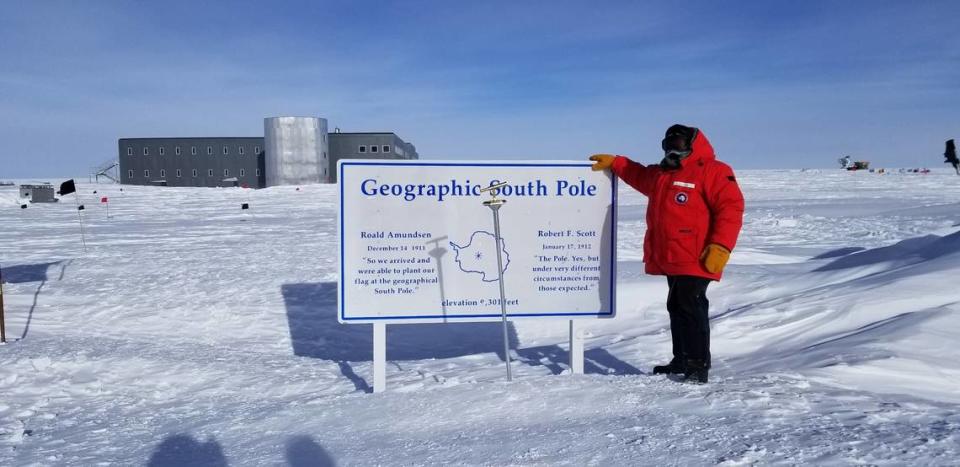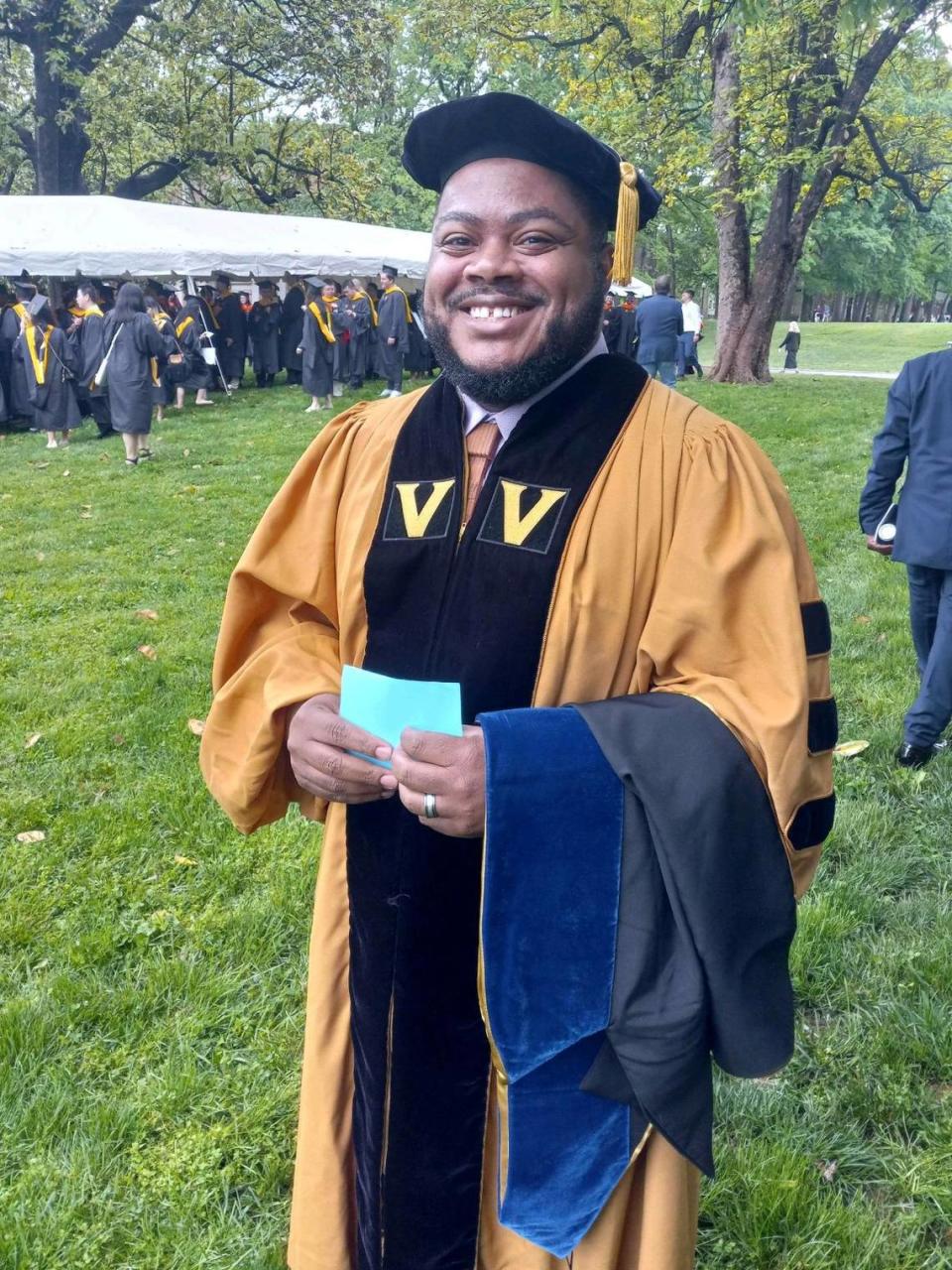‘Nothing less than amazing.’ Columbus native beat the odds to work at the South Pole
The youngest of 10 siblings, John Hood grew up in the south Columbus neighborhood of Oakland Park. His parents — father was a soldier, mother was a civil servant — are retired from working at Fort Benning, now named Fort Moore.
Becoming a space scientist seemed like a career path as far away as reaching the South Pole for this first-generation college graduate who didn’t see many other Blacks doing what he dreamed. But this 2006 Carver High School graduate took advantage of opportunities and achieved both goals.
As part of the South Pole Telescope Group, based in Chicago, Hood worked at the South Pole for a month in 2019. He told the Ledger-Enquirer his experience was “nothing less than amazing.”
And he credits the Columbus State University Coca-Cola Space Science Center (CCSSC) for helping him along that path.
“The science center played a huge role in both my education and my career,” said Hood, now 34.
Hood was among three scientists relieving the duties of another trio at the South Pole. He was one of four or five members of the upgrade team, ranging from graduate students to senior faculty. His role was as an experimentalist, conducting updates and maintenance on the telescope.
Although he felt homesick without consistent communication with family and friends during that month, Hood savored the opportunity.

“The best part to me was getting to work with all of the different groups on the station,” he said. “Since I went during a slower season, I was able to help out with many different jobs and positions around to keep busy along with conducting our routine maintenance to keep the telescope running.”
From no college to doctorate in astrophysics
After graduating from Carver, Hood worked at a few restaurants and considered enlisting in the military, but he was advised to pursue a college degree.
Hood went to CSU as an engineering major. But after he and his wife attended an astronomy night at the Coca-Cola Space Science Center, his interest in space science soared. Then, after taking a course taught by CCSSC director Shawn Cruzen, Hood changed his major to astrophysics.
Hood worked at the CCSSC, first as a volunteer and later as a part-time staff member. He helped host astronomy nights, operated telescopes and the planetarium, and manned the gift shop. He also participated in education outreach through the mobile planetarium that visits schools and other sites around the Chattahoochee Valley.
After earning a bachelor’s degree in astrophysics and planetary geology from CSU in 2014, Hood worked as the CCSSC’s observatory technician for one year before enrolling in the Fisk-Vanderbilt Master’s-to-PhD Bridge Program in Nashville. The program seeks to improve demographic representation in STEM (science, technology, engineering and math).
The only STEM career field where Black Americans are represented at the same level as their share in the total workforce is health-related occupations, according to a 2021 Pew Research report.
Hood earned a master’s degree in physics from Fisk in 2017 and a doctorate in astrophysics from Vanderbilt in 2022. Now, he is a postdoctoral researcher, working as a National Science Foundation fellow in the Office of Polar Programs at the University of Chicago.

“I honestly became a scientist because I’m naturally curious and love puzzles,” he said. “Science is made for people like this. I enjoy the fact that every day I get to try and help answer questions that either a huge group or even a small group of people are interested in.”
Coca-Cola Space Science Center impact
Hood is among more than 90 former CCSSC interns in the center’s 27-year history who have gone on to pursue STEM careers, Cruzen told the Ledger-Enquirer. They work in organizations such as NASA, Blue Origin, Axiom Space, Teledyne, Planetary Science Institute and New Mexico State University.
“John was always curious about science and space exploration, but he didn’t understand that he actually could pursue a career in the field,” Cruzen said. “That is a key benefit CCSSC provides to the community. It helps link capable students like John with the skills and pathways necessary to realize their dreams of working in the space industry. John has made the most of his opportunities and has achieved more than any of us imagined. We are extremely proud of him for his accomplishments.”
Cruzen also is proud of Hood for persevering against the odds of his background to achieve such success in science.
“John developed a passion for exploring the universe through astronomy,” Cruzen said, “and he was tenacious in overcoming all the obstacles that would keep him from pursuing his passion.”
Passion also is one of the factors Hood mentioned when he reflected on how he became a scientist who reached the South Pole. And he added persistence and having the right people around him as teachers and mentors.
“I just found people that supported me and wanted to see me succeed and stuck with them,” he said, “and that made all the difference in the world to me personally.”
His ultimate career goal is to become a research scientist at a university or national lab.
“My ideal daily workload would include doing research and public outreach,” he said. “I would add the possibility of teaching once I get past the jitters.”
Hood has advice for folks who want to succeed in underrepresented fields.
“Don’t let being the odd person out prevent you from chasing a dream or passion,” he said. “Nobody does anything alone. It always takes a village. Find yours. Sometimes you stumble into it, and sometimes you have to search for it. Just don’t stop until you do.”

